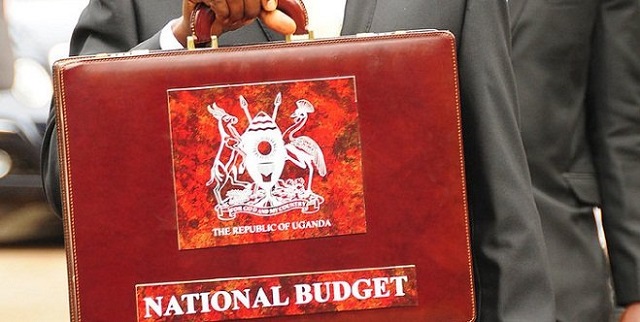
Why government’s biggest problem is not the size of its debt but its cost of borrowing
THE LAST WORD | Andrew M. Mwenda | Uganda’s 2023/24 budget, like all previous ones in the last few years, has generated a lot of controversy about the role of public debt in our national life. Growths in our tax revenues tends to stimulate an even faster growth in our government’s spending appetite. Uganda’s revenue growth has been fairly good in absolute terms, even though in relative terms (as a percentage of GDP) it has stagnated for decades. Thus, while the 2019/20 budget envisaged tax receipts of Shs19 trillion, that of 2023/24 projects Shs30 trillion a growth of 33% in just five years only.
But let us look at the other details. Next financial year’s total budget is Shs53 trillion. However, Shs8 trillion is debt rollover. These are debts government of Uganda that it will have to borrow from someone else to pay. That leaves the government with Shs45 trillion to spend. However, of this, nearly Shs17 trillion is debt repayment principal and interest. That means the money actually available for spending on recurrent and development items is only Shs28 trillion. This means that if government did not have any debt whatsoever, its tax receipts are enough to finance the entire budget and even have a surplus.
Again, if you look at the details of Uganda’s debt, you realise how much government borrowing is injurious to its own cause. For instance, of the total debt of Shs81 trillion, Shs48 trillion is foreign debt (60%) while Shs33 trillion is domestic debt (40%). However, if you look at debt service, total repayments this financial year are Shs16.3 trillion. Of this, Shs12.8 trillion (78%) goes to service domestic debt while only Shs2.5 trillion goes to service foreign debt. Yet even though foreign debt is Shs48 trillion (almost two times the size of domestic debt at Shs 33 trillion), the cost of servicing its interest is Shs1.1 trillion only while interest cost of interest on domestic debt is a whopping Shs4.8 trillion.
In other words, our foreign debt of Shs48 trillion takes 20% of our total interest costs, while interest on our domestic debt of Shs33 trillion takes 80%. I know domestic borrowing is convenient. Government cannot fail to pay since it can print the money. But even this would be inflationary.
The more critical issue is that Shs 4.8 trillion interest on Shs 33 trillion principal is 14.5%. That is the average cost of domestic borrowing. Meanwhile Shs1.1 on Shs 48 trillion is only 2.2%. That is the cost of foreign borrowing. The cost of domestic borrowing is therefore extremely high and is the biggest drain on the budget in both relative and absolute terms.
Yet the worst part of it is that it crowds the private sector out of the credit market. Imagine you are a banker. You can lend Thomas and risk default. Or you can invest in a government treasury bond with zero risk and earn 14.5%. Where would you put the money? It is possible that you can choose to lend Thomas. But you would have to hike the cost of lending to him to about 25 percent. That is the only thing that would justify a choice between a government’s interest of 14.5% and a private sector interest. Therefore, government borrowing is a major factor in high bank interest rates, making it difficult for the private sector to borrow and grow. Basically, deficit financing is killing the goose that is supposed to lay the golden egg of growth – since our motto is private sector-led growth.
Government has another hidden and debilitating borrowing that harms the private sector – it is called domestic arrears. Here government gives contracts to private companies. They borrow from banks to supply it goods and/or services. However, government takes two years without paying them. By the time it pays, bank interest has eaten into their profits. Many have gone bankrupt. But these arrears also create another problem: whom government pays depends on who has paid the highest bribes to officials responsible. In this financial year alone, domestic arrears are Shs5.7 trillion. That is a huge chunk of money to keep away from the private sector.
The part of Uganda’s hidden debt are contingent liabilities. These are the claims people have against government in court. As of now, they are Shs18 trillion worth. According to the attorney general’s office, on average, government loses 30% of these cases. Ideally, in its balance sheet (a statement of its assets and liabilities), government needs to provide for Shs6 trillion in contingent liabilities. These constitute part of the claims other parties have on its revenues. So, if we get total debt plus total domestic arrears and 30% of these contingent liabilities, the total government debt is not Shs81 trillion but Shs93 trillion. Since our GDP is Shs184 trillion, our debt to GPD ratio is not 44% as we think but 51%.
But I do not think the debt to GDP ratio is a good guide to understanding debt sustainability. The best guide is the ratio of the cost of debt service to government revenues. For instance, total debt service (principal and interest) this year will be Shs16.3 trillion. Total revenues will be almost Shs30 trillion. That means debt service will take more than 50% of our revenue. Now we can keep the same debt levels but assume it is borrowed from abroad based on the cost of interest above. If all Uganda’s debt was foreign loans at their low interest rates, the total cost of debt service would have been about Shs4.3 trillion. This is only 14% of our projected revenues, thereby making our current debt sustainable.
This means that Uganda really has huge space to borrow if it focuses on foreign loans, especially concessionary loans. For instance, assume we got an extra Shs 10 trillion in loans from the government of Japan. Their loans maturity rates are 40 years with ten years grace period and 0.1% interest. With such a loan, there would be no pressure on our revenues for the next ten years and the interest charges from the 11th to the 40th year would be negligeable. And if Uganda was aggressive enough, it would be able to get more money on these concessionary terms than it is doing now. Therefore, the issue here not the size of our debt but its structure.
*****

amwenda@independent.co.ug
 The Independent Uganda: You get the Truth we Pay the Price
The Independent Uganda: You get the Truth we Pay the Price




1.Ugandans have really had a treat with M7’s government.
2.Loans are meant to make our lives better;its just that Ugandans even the educated ones are used to acquiring loans through money lenders and they are forced to sign land and car sales agreements and fill transfer forms before they receive the money they even have to take photographs while pausing besides their cars perhaps such unrealistic terms makes them think that M7 has to pause while taking a photo at Karuma Dam,Lake Victoria,Mulago,Entebbe Airport before we are given loans.
3.After world war II; the world bank was created to enable European nations to recovery economically.
4.Ugandans have written many books from M7 to Muhoozi, Pike,Bart Katureebe,Onapito,Aliker, now Patience Museveni’s book is soon being published it was foreworded and reviewed by M7; i cried when he commented that Patience’s name was always on the Vice Chancellor and Dean ‘s list while at the university.
5.Uganda’s economy is safe because;
(i)She has never allowed tax cuts.
(ii).The government does not entertain subsidies on fuel and cooking gas.
(iii)M7 has never allowed ban on imports on raw materials.
(iv)Because of the diverse economy; we earn dollars from minerals,coffee,tourism so the issue of Balance of payment of trade can be sustained.
(v) We have never depleted our foreign reserves because we don’t rush when there is instability in the international Capital market.
(vi)The global village is now big;Asia and the Arab states are good trade partners.
(vii) USA,EU are no longer scarecrows.
(viii) The loans we apply for are long terms loans and have flexible pay terms.
(ix)We have local trade partners like;Rwanda, Kenya,Burundi,Congo Sudan who consume our locally produced goods.
(x) We are taking one day at a time we don’t want to be like Greece,Sri Lanka who were in a hurry to use Euros and dollars.
Government has another hidden and debilitating borrowing that harms the private sector